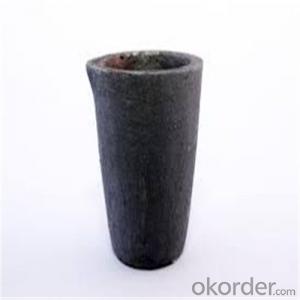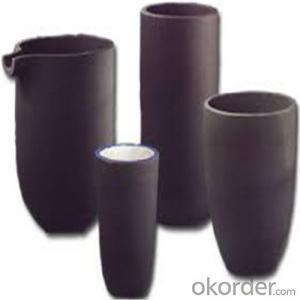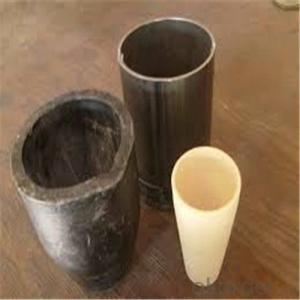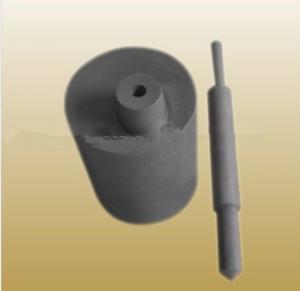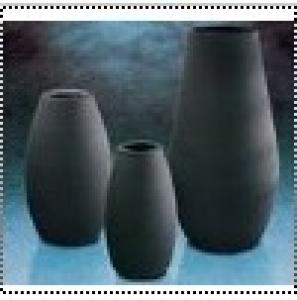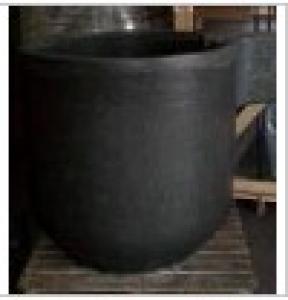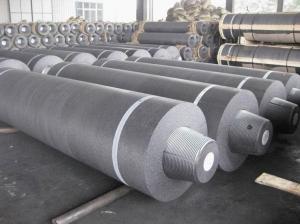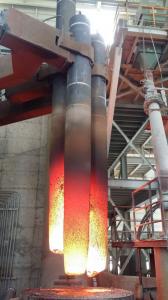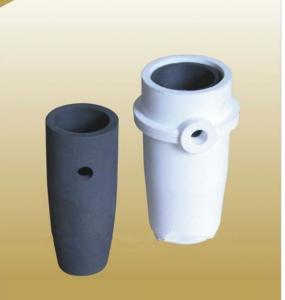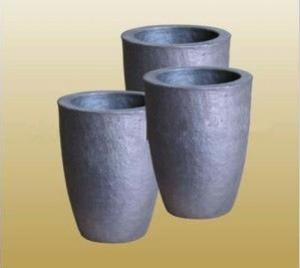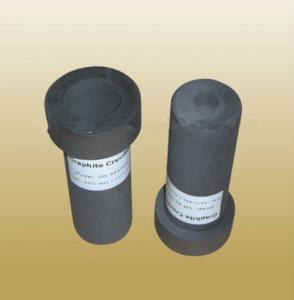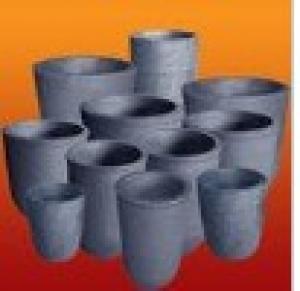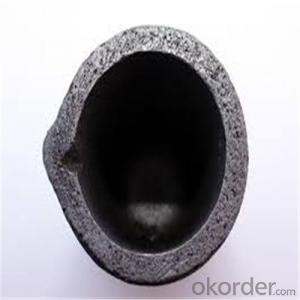Refractory Crucibles Sic Crucible For Melting Copper
- Loading Port:
- Shanghai
- Payment Terms:
- TT OR LC
- Min Order Qty:
- 1 pc
- Supply Capability:
- 1000 pc/month
OKorder Service Pledge
OKorder Financial Service
You Might Also Like
Quick Details for Refractory Crucibles Sic Crucible For Melting Copper/Brass/Aluminum
| Type: | High Strength, graphite crucible crucible | Application: | melting metal | Height: | as your requirements |
| Composition: | High Pure | Top Diameter: | 10-600mm | Bottom Diameter: | 10-1000mm |
| Place of Origin: | China (Mainland) | Brand Name: | Model Number: | ||
| Color: | Black grey | Si3N4%: | 5min | Fe2O3%: | 0.7max |
| C%: | 30-45 | Apparent porosity: | 30max | Refractoriness: | 1680 |
| Bulk Density: | 1.71min | Using life: | >5000 hours | MAX temperature: | 1600c |
Packaging & Delivery
| Packaging Details: | Seaworty packing or as per customer's detail requirement of graphite crucible. |
| Delivery Detail: | within 20-30 days after confirm order of graphite cru |
Refractory Crucibles Sic Crucible For Melting Copper/Brass/Aluminum
Product Description
Specifications for Graphite Silicon Carbide Crucible For Aluminum Melting :
1.Long working lifetime: its working lifetime is increased 3-5 times over normal clay-crucible due to the compact body formed under high pressure.
2.High thermal conductivity: high-density body and low apparent porosity greatly improve its heat conductivity.
3.New-style materials: new heat conduction material ensures faster heat conductivity and pollution-free product, reduces adherent slag.
4.Resistance to corrosion:better anti-corrosion than normal clay-crucible.
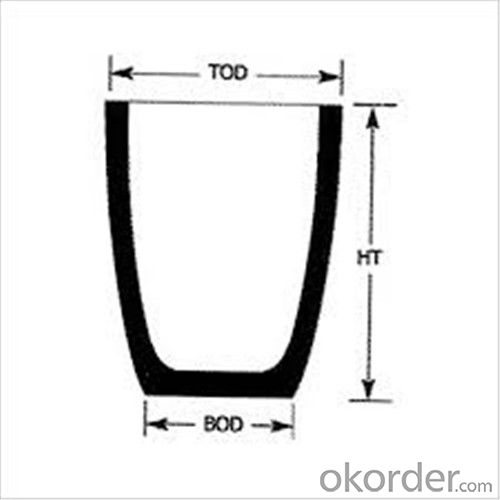

Refractory Crucibles Sic Crucible For Melting Copper/Brass/Aluminum
Physicochemical Properties
Type of Crucible | Type S | Type D |
Carbon Content/% | ≥38 | ≥45 |
Bulk Density/(g/cm3) | ≥1.70 | ≥1.85 |
Apparent Porosity/% | ≤29 | ≤21 |
Compression Strength/MPa | ≥20 | ≥25 |
Refractoriness/°C | ≥1400 | ≥1400 |
Type S: Clay graphite crucible
Type D: Isostatic pressing graphite crucible
Cited from CNS China National Standard of Graphite Crucible, which is solely drifted by TIANFU company.
Content Composition
C% | Sic% | AL2O3% | SIO2% |
45%-50% | 20%-30% | 10%-12% | 15-25% |
FAQ
1.What's your MOQ?
We will indicate the MOQ for each item in the quotation list. We accept the sample and trail order.
2.Can I negotiate the Prices?
Sure, we may consider discounts for bulk order of products.
3.How long will it take to complete my order?
For the stock items, we can arrange the shippment within 2~3days after received your payment. For the customized items, we will indicate the delivery time in the quotation list.
4.Can you give warranty of your products?
Yes, we extend a 100% satifisfaction guarantee on all items. Please feel free to provide timely feedback if you're not satisfied with N&D's Quality and Service. For the overseas orders, if there is a quality problem, please kindly to provide the picturers to show the problem by e-mail. We will provide the replacements to you at our cost according to actual conditions.
5.Can I visit you?
Sure. If you're a volume buyer and would like to visit our in-house products and production line, please contact us to make an appointment.
- Q:Intermediate frequency induction furnace melting copper with what dry pot?
- The filler to the insulation cloth and the crucible, use a sharp object to play, a dozen layers, to tell the truth, very complicated things, if not, there will be consequences --- as filler, can with mullite sand, quartz sand and so on.
- Q:Can graphite crucibles be used for melting reactive metals?
- Yes, graphite crucibles can be used for melting reactive metals. Graphite is highly resistant to heat and has excellent thermal conductivity, making it an ideal material for high-temperature applications such as melting reactive metals. Additionally, graphite is chemically inert and does not react with most metals, including many reactive ones. However, it is important to note that there are certain reactive metals, such as alkali metals or certain rare earth metals, that can react with graphite at high temperatures. In such cases, alternative crucible materials like refractory metals or ceramics may be more suitable.
- Q:How long is the service life of the cast iron crucible?
- Now basically no trial of cast iron crucible, graphite crucible is a cast iron crucible, the general can only use a month or so, now the shortest graphite crucible can be used for half a year, Wuxi branch cast Trade Co., a cast card graphite crucible
- Q:Can graphite crucibles be used for electrode production?
- Yes, graphite crucibles can be used for electrode production. Graphite is an excellent material for making electrodes due to its high melting point, good electrical conductivity, and chemical stability. Graphite crucibles are commonly used in industries such as metallurgy, foundries, and electrical engineering for producing various types of electrodes. They can withstand high temperatures and provide a stable environment for electrode production. Additionally, graphite crucibles can be easily shaped or customized to meet specific electrode requirements, making them a preferred choice in many applications.
- Q:Cast iron into a casting. What is the state of the matter, change, sublimation?
- Cast iron into a casting. What is the state of the matter, sublimation?Container for molten iron called graphite crucible, good high-temperature resistance, it is higher than the melting point of iron.
- Q:Are there any specific cleaning agents or methods recommended for graphite crucibles?
- Yes, there are specific cleaning agents and methods recommended for graphite crucibles. Graphite crucibles should be cleaned using a mixture of water and potassium nitrate or hydrochloric acid. The crucible should be soaked in this solution for a specific duration and then rinsed thoroughly with water. Additionally, a soft brush can be used to remove any stubborn residue. It is important to follow the manufacturer's guidelines and safety precautions while cleaning graphite crucibles.
- Q:Can quartz ceramic crucibles instead of graphite crucibles?
- Graphite conducts electricity. Sometimes it takes graphite to heat it, though it is rare, so it can not be replaced
- Q:How much temperature does a graphite crucible hold?
- Attention to the use of graphite crucibles1, the pot stored in ventilated and dry environment, so as not to affect the use of damp.2, the crucible should be handled gently in the handling, do not fall shock, do not roll, so as not to damage the protective layer of the crucible surface.3, before use to bake the crucible in advance, baking temperature from low to high temperature and slowly, turning the crucible, let the heat evenly, excluding crucible body water, preheating temperature gradually rose to 500 degrees Celsius (such as preheating caused by improper crucible spalling, cracking, not a quality problem will not be returned)4, crucible furnace and crucible to complete, up and down the gap around to meet the requirements, not the pressure in the crucible furnace cover body.5, use should avoid direct flame spraying crucible body, should be sprayed to the crucible base.6, when feeding should be added slowly, it is best to scrap, aniseed don't put too much, too tight, so as not to split up the crucible.7. The crucible tongs used for loading and discharging should be in conformity with the appearance of the crucible, so as not to block the crucible.8, the crucible is best for continuous use, so as to better play its high performance.9, the amount of additive should be added in the smelting process, and excessive use will reduce the service life of the crucible.10. When using the crucible, rotate the crucible periodically so that it can be heated evenly and extended.11, remove the crucible inside and outside the wall of slag and coke should be tapped to avoid damage to the crucible.
- Q:How do you determine the melting capacity of a graphite crucible?
- To determine the melting capacity of a graphite crucible, there are several factors to consider. Firstly, the size and shape of the crucible play a significant role. The volume of molten material that a crucible can hold is directly related to its dimensions. Typically, crucibles are available in various sizes, so selecting the appropriate size for the desired melting capacity is crucial. Secondly, the material being melted and its corresponding melting point are important considerations. Different materials require different amounts of heat energy to reach their melting point. The melting capacity of a crucible should be determined based on the specific material being melted and its associated temperature. Thirdly, the quality and composition of the graphite used in the crucible is essential. High-quality graphite with good thermal conductivity and resistance to thermal shock can withstand higher temperatures and facilitate efficient heat transfer, resulting in a higher melting capacity. Lastly, the heating method and equipment used also influence the melting capacity. The heating rate, maximum temperature achievable, and the overall efficiency of the heating system can impact the crucible's ability to melt materials. To determine the melting capacity of a graphite crucible, one can refer to the manufacturer's specifications or consult with experts in the field. Additionally, conducting trial runs with small quantities of the material being melted can provide practical insights into the crucible's melting capacity. It is important to consider safety precautions and follow recommended guidelines when determining the melting capacity to avoid any damage to the crucible or potential hazards.
- Q:What are the different methods of preventing oxidation in a graphite crucible?
- There are several methods to prevent oxidation in a graphite crucible. 1. Coating: One common method is to apply a protective coating on the inner surface of the crucible. This coating acts as a barrier between the crucible and the oxidizing atmosphere, preventing direct contact and oxidation. Common coating materials include refractory materials like zirconium oxide or alumina. 2. Preheating: Another effective method is preheating the crucible before use. By exposing the graphite crucible to high temperatures, any existing impurities or volatile substances are burned off, leaving behind a more stable and less susceptible surface. This helps to minimize oxidation during subsequent use. 3. Vacuum or inert gas environment: Performing operations in a vacuum or an inert gas environment, such as argon or nitrogen, can greatly reduce the chances of oxidation. These environments lack oxygen, which is necessary for oxidation to occur. By eliminating or reducing the presence of oxygen, the graphite crucible is protected from oxidation. 4. Controlling temperature: Proper control of temperature can also help prevent oxidation in a graphite crucible. Excessive and prolonged exposure to high temperatures can accelerate oxidation. By keeping the temperature within a specific range and avoiding sudden temperature changes, oxidation can be minimized. 5. Regular cleaning and maintenance: Finally, regular cleaning and maintenance of the crucible is essential to prevent oxidation. Removing any contaminants or residues that may have accumulated on the surface helps to maintain the integrity of the crucible and prevent oxidation during subsequent use. It is important to note that the choice of method may vary depending on the specific application and requirements. The selection of a suitable method should be based on factors such as the nature of the materials being processed, the operating conditions, and the desired level of protection against oxidation.
1. Manufacturer Overview |
|
|---|---|
| Location | |
| Year Established | |
| Annual Output Value | |
| Main Markets | |
| Company Certifications | |
2. Manufacturer Certificates |
|
|---|---|
| a) Certification Name | |
| Range | |
| Reference | |
| Validity Period | |
3. Manufacturer Capability |
|
|---|---|
| a)Trade Capacity | |
| Nearest Port | |
| Export Percentage | |
| No.of Employees in Trade Department | |
| Language Spoken: | |
| b)Factory Information | |
| Factory Size: | |
| No. of Production Lines | |
| Contract Manufacturing | |
| Product Price Range | |
Send your message to us
Refractory Crucibles Sic Crucible For Melting Copper
- Loading Port:
- Shanghai
- Payment Terms:
- TT OR LC
- Min Order Qty:
- 1 pc
- Supply Capability:
- 1000 pc/month
OKorder Service Pledge
OKorder Financial Service
Similar products
New products
Hot products
Related keywords
